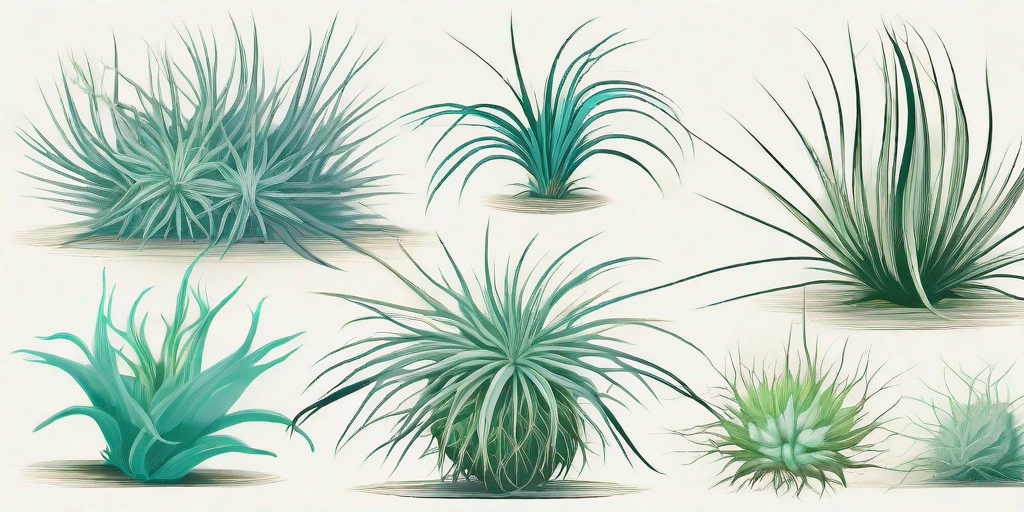
Air plants, also known as Tillandsias, are the cheeky rebels of the plant kingdom. They scoff at the idea of soil, preferring to hang out in the air, absorbing nutrients and water through their leaves. But when it comes to reproduction, these airborne anarchists follow a fascinating process that's as unique as they are. So, buckle up, plant lovers, as we delve into the captivating world of air plant reproduction.
The Birds and the Bees of Air Plants
Unlike their soil-bound cousins, air plants don't rely on seeds alone for reproduction. They have a few tricks up their leaves that make their love life a lot more interesting. Let's explore these methods, shall we?
Vegetative Reproduction
First up is vegetative reproduction, also known as cloning. Sounds sci-fi, doesn't it? Well, in a way, it is. When an air plant reaches maturity, it will start producing offsets, or "pups" as they're affectionately known. These pups are genetically identical to the parent plant - hence, clones.
Over time, these pups grow and mature, eventually producing pups of their own. This process allows a single air plant to become a whole colony of plants, all without a single seed in sight. It's like a family reunion, but without the awkward conversations and questionable potato salad.
Sexual Reproduction
But what about the birds and the bees, you ask? Well, air plants do partake in sexual reproduction as well. This involves flowers, pollen, and a whole lot of plant romance.
When an air plant is ready to reproduce sexually, it will produce a stunning flower. This isn't just for show - the flower contains both the male (pollen) and female (ovule) reproductive organs. Once pollinated, either by wind or insects, the ovule develops into a seed, which can grow into a new plant.
How to Encourage Air Plant Reproduction
Now that we've covered the how, let's move on to the why. Why would you want to encourage your air plants to reproduce? Well, aside from the sheer joy of watching the miracle of plant life unfold, it's also a great way to expand your air plant collection without spending a dime. Here's how to do it.
For Vegetative Reproduction
Encouraging vegetative reproduction in air plants is as easy as pie. All you need to do is provide the right conditions for your plant to thrive. This includes plenty of indirect sunlight, regular watering, and good air circulation.
Once your plant is happy and healthy, it will start producing pups on its own. You can leave these pups attached to the parent plant, where they will continue to grow and mature. Or, if you're feeling adventurous, you can carefully remove the pups and plant them separately. Just be sure to wait until they're at least a third of the size of the parent plant to ensure they're strong enough to survive on their own.
For Sexual Reproduction
Encouraging sexual reproduction in air plants is a bit trickier, but still doable. The key is to mimic the conditions that trigger flowering in the wild. This includes a drop in temperature and a decrease in daylight hours.
Once your plant flowers, you can hand-pollinate it by transferring pollen from the male parts of the flower to the female parts using a small brush. If successful, your plant will produce seeds that you can harvest and plant. Just keep in mind that this process takes a lot of time and patience, so don't be discouraged if it doesn't work on your first try.
FAQs About Air Plant Reproduction
Still got questions? Don't worry, we've got answers. Here are some of the most frequently asked questions about air plant reproduction.
- How long does it take for an air plant to reproduce?
It depends on the method. Vegetative reproduction can happen within a few months, while sexual reproduction can take up to a year or more. - Can I force my air plant to flower?
While you can encourage flowering by mimicking certain conditions, you can't force an air plant to flower. It will do so when it's ready. - How many pups will an air plant produce?
Again, it varies. Some air plants will produce only one or two pups, while others can produce several.
Conclusion
And there you have it, folks - the fascinating world of air plant reproduction. Whether they're cloning themselves or getting frisky with flowers, air plants certainly know how to keep things interesting. So next time you see a pup or a flower on your air plant, give it a nod of respect. After all, reproduction is hard work - even for plants.
Now, go forth and spread the air plant love. Happy growing!















